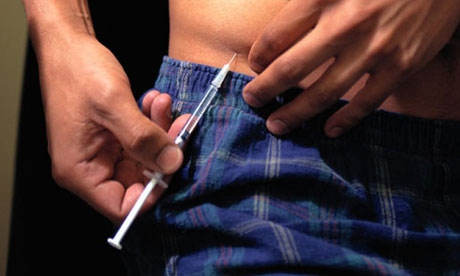
Scientists have made insulin-producing cells from sperm stem cells, a technique that could one day be used to treat people with type 1 diabetes.
The disease is caused by the destruction of insulin-producing cells in the pancreas, leading to low levels of the hormone that regulates sugar in the blood. It can develop at any age but usually appears before the age of 40, and particularly in childhood. Around 5-15% of all people with diabetes have type 1 diabetes, which is usually treated with, among other things, daily insulin injections.
In the latest study, G. Ian Gallicano, an associate professor at Georgetown University Medical Centre in Washington DC, transformed the early precursors for human sperm, called spermatogonial stem cells (SSCs), into beta-islet cells, which produce insulin and are normally found in the pancreas. When he transferred these cells into mice, they successfully regulated sugar levels in the rodents' blood.
He presented his team's work today at the American Society of Cell Biology annual meeting in Philadelphia. "No stem cells, adult or embryonic, have been induced to secrete enough insulin yet to cure diabetes in humans, but we know SSCs have the potential to do what we want them to do, and we know how to improve their yield," said Gallicano.
His team extracted human SSCs from the testicles of dead organ donors. "We found that once you take these cells out of the testes niche, they get confused, and will form all three germ layers within several weeks. These are true, pluripotent stem cells," said Gallicano. Pluripotent stem cells can develop into any tissue in the body. Germ layers are groups of cells formed when an embryo grows, each layer corresponding to different cell types in the body.
From a single gram of tissue from human testes, the researchers produced around 1 million stem cells. They showed that these contained biological markers indicating they were similar to beta-islet cells. When these were transplanted into diabetic mice (which were engineered to have no immune system), the rodents' blood sugar levels dropped. This effect lasted for a week, showing that the transplanted cells were producing insulin over this period.
If this technique could be replicated in humans, using a man's own tissue to create replacement insulin would overcome several problems with many of the potential treatments currently being tested for type 1 diabetes. One idea involves transplanting islet cells from dead donors, but this source is limited and the transplant can end up being rejected by the patient's immune system.
Alternative ideas include transplants of adult stem cells that have been reprogrammed to behave like more versatile, embryonic stem cells. Unfortunately, this technique can produce tumours in the tissue.
"This method of obtaining [beta]-islet-like cells solves the problem of immune rejection in male diabetes patients, as treatment based on this research would be autograft, and the cells would be recognised as 'self'," wrote Gallicano in an abstract to his research.
Gallicano added that his work was not confined to treating men. There was no reason, he said, why the fundamental understandings from his team's research could not be extended to egg cells. In women, the precursor stem cells of eggs could be turned into beta-islet-like cells.

